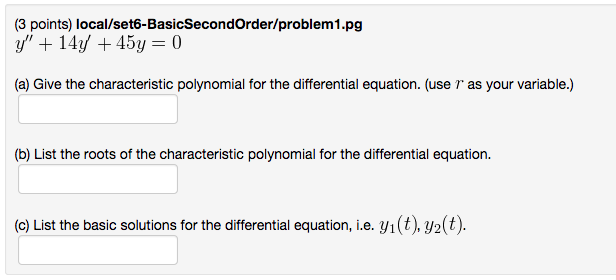Hi everyone,
Just a quick note about part c) in problems like these:
The “basic solutions” refer to the two solutions that come from plugging the roots of the characteristic equation into our “best guess” formula .
For example, if the two roots are , then the basic solutions would be:
Let me know if you have any followup questions (or questions about anything else in the current WeBWorK assignment).
Regards,
Prof. Reitz




